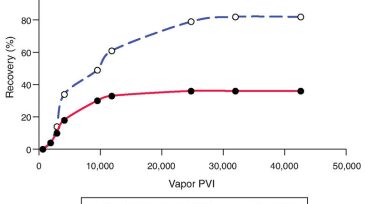heavy oil
-
Canada will become the world’s fifth-largest producer of crude oil in 2017. The solvent-assisted-SAGD poses the largest advancement in production techniques in the oil sands, and if scaled up, could further reduce extraction costs.
-
Getting a good well for a field test can make or break a new idea. A government backed research group in Saskatchewan is offering up to CAD 100,000 break on royalty payments to test ways to extend the life of conventional, heavy-oil fields.
-
The deal will transfer nearly 2 billion bbl of reserves to Canadian Natural Resources while bolstering Shell's downstream and carbon-capture role in support of oil sand development.
-
Cost optimization in heavy-oil production can be achieved through numerical modeling to suggest general optimal strategies and development plans or by using proper real-time data acquisition … for prompt decisions while operations are ongoing.
-
The A East Haradh formation contains a 200-m-thick oil column of highly viscous oil, with viscosity ranging from 200 to 400,000 cp.
-
The most popular technology for producing heavy oil (HO) and bitumen is reservoir heating, mainly by steam injection.
-
This paper presents an investigation into the effect of catalytic nanoparticles on the efficiency of recovery from continuous steam injection.
-
Innovation is required, but it is not a super-power allowing engineers to effortlessly vaporize long-standing challenges.
-
SPE conferences in Calgary examine the challenges of finding and producing heavy oil and unconventional hydrocarbons at a time when Canadian producers are feeling exceptional price pressures.
-
Distributed temperature sensing (DTS) is the most common fiber-optic measurement used for steam-assisted-gravity-drainage reservoir monitoring.










